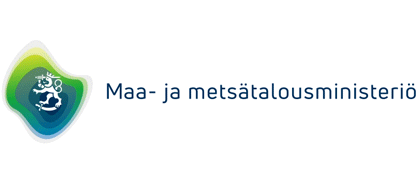National aid for Finnish agriculture
National agricultural aids mean the types of aid that are paid in full from the state funds. In 2022 a total of EUR 330,2 million of state budget funds were allocated to be used for the national aid for agriculture and horticulture. National aids supplement the support schemes of the EU (direct payments, natural handicap payments, environment payments and animal welfare payments), secure the operating conditions and improve the profitability of agriculture and horticulture, and preserve the viability of the countryside.
The common agricultural policy of the EU is mainly based on the use of the common support instruments of the EU for maintaining and developing agricultural production. This means that there are severe restrictions on the use of national funds to support agriculture. As a rule, approval by the European Commission is always required for the national aids supplementing the EU schemes.
The Nordic Aid guarantees the development of agriculture in northern Finland
The most significant type of national aid is the Nordic aid (aid for the northern regions of Finland). The purpose of the Nordic aid is to maintain the production in the region, develop the production structure, ensure market access for the products, and promote environmental protection and preserving the viability of the rural areas. The aid is paid under Article 142 of the Treaty of Accession of Finland and the Commission decisions taken under it in support area C in central and northern Finland (north of the Lappeenranta - Tampere - Pori line). In 2022 a total of about EUR 300 million, about 91% of the budget funds for the national aids, were used for the Nordic aid.
The Nordic aid for milk production is paid on the basis of the litres produced. Aid based on the livestock units is paid for beef cattle, ewes, she-goats and horses. In the pig and poultry sectors decoupled aid is paid on the basis of the production history of the farms. For arable farming the aid is paid as the Nordic area-related aid, general area-related aid and aid for young farmers. In greenhouse production the aid is paid on the basis of the production area. Types of the Nordic aid smaller in scale include the aid for reindeer, transportation aid, and storage aid for horticulture products.
Support also for agriculture and horticulture in Southern Finland
Aid for southern Finland, which used to be known as aid under Article 141 of the Treaty of Accession, is paid in support area AB in southern Finland (north of the Lappeenranta - Tampere - Pori line). Until the end of year 2022 this aid was based on Article 214 a of Regulation of the European Parliament and of the Council (EU) No 1308/2013, under which the Commission has issued a more detailed decision C(2014) 510. In 2022 the amount of the aid for southern Finland totalled about EUR 17 million, which is about 5 % of the total amount of the national aid. The aid is paid as decoupled aid for pig and poultry husbandry and aid for horticulture. On 27 October 2022, the Commission issued its decision C (2022) 7,573 on national aid for southern Finland in 2023-2027. In the current period, the total amount of aid will gradually decline, as in the previous periods, but the main principles of the aid scheme will otherwise remain unchanged.
From 2015 direct coupled EU support has been paid in the milk production, beef cattle and sheep and goat sectors. This means that different support schemes are being applied in northern and southern Finland. However, in relative terms the levels of support paid for these sectors in the southern parts of the area covered by the Nordic aid and in southern Finland are about the same. The levels of aid rise towards the north also within the area covered by the Nordic aid due to the differences in the production conditions.
Of the other types of national aids the aid for sugar beets paid under Article 241 of Regulation of the European Parliament and of the Council (EU) No 1308/2013 is the most significant one. The amount of this aid has been about EUR 5 million, with some variation in the annual cultivation area. Other types of national aid include the aid for apiculture and transportation aid for sugar beets.
Lisätietoja
Martti Patjas, neuvotteleva virkamies
maa- ja metsätalousministeriö, ruokaosasto, Maatalousyksikkö Puhelin:0295162474 Sähköpostiosoite: etunimi.sukunimi@gov.fi
